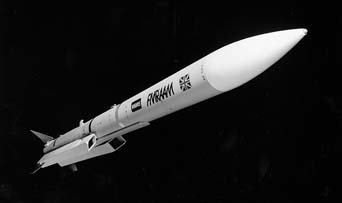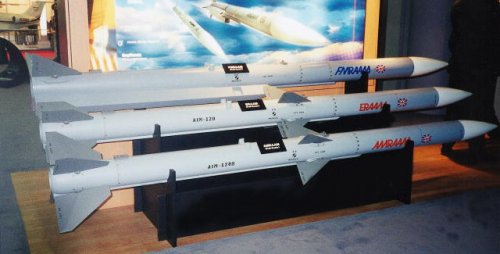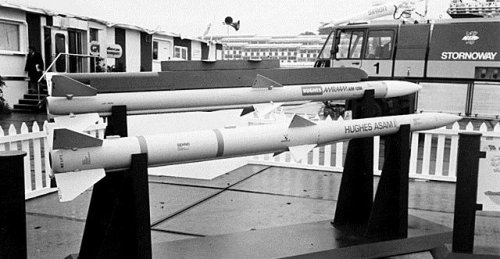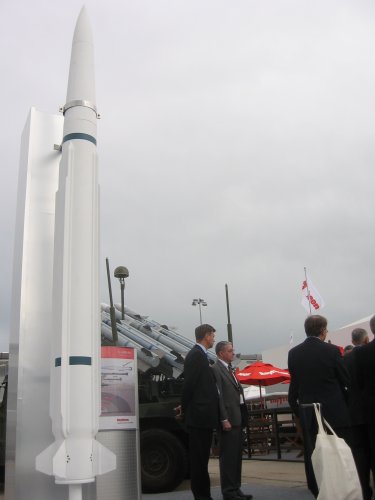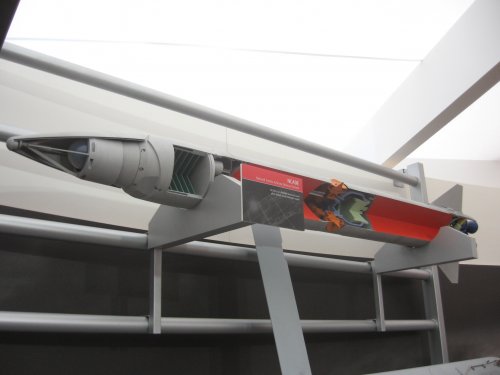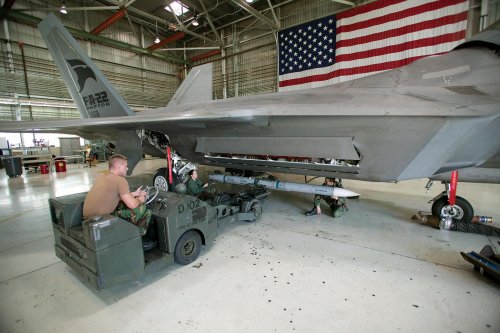"Depending on what type of platform you are flying, that will change your perception of what type of capability you require," Neil Jennings, AMRAAM's business development director at Raytheon Missile Systems told IHS Jane's . "If you are flying a fourth-generation aircraft, and you know that the guy on the other side can see you, then of course you want a longer-range weapon; but if you're in a fifth-generation aircraft, a longer-range weapon would usually mean more size, more weight, and [be] larger to carry, and it's not necessarily a priority for you because if the other guys can't see you, then you don't have to engage them at super longer ranges. So the fifth-generation aircrew would probably want a smaller weapon so that they can cram more of them in their weapons bay - they'll be smaller, more agile, more manoeuvrable, and cheaper."
In September 2013, Lockheed Martin Missiles and Fire Control unveiled two company-funded potential extended-range AAM initiatives, which it proposed as concepts of interest under the US Defense Advanced Research Projects Agency (DARPA) Air Dominance effort at the Air Force Association exhibition.
Under the Supersonic Testbed Risk Reduction initiative, Lockheed Martin is examining air-breathing and rocket propulsion, including multipulse motors, hit-to-kill technology, and different guidance on a future weapon in the same size class as the AIM-120 AMRAAM. Another initiative, Cuda, is described as a miniature (about half the size of an AMRAAM), radar-guided multirole hit-to-kill missile, designed to increase the air-to-air weapons load out on platforms such as the F-35 and F-22. The Cuda's range has not been disclosed, but it is believed that one variant could provide for a two-stage solution similar in total length to AMRAAM, and potentially offering an increased range or wider engagement envelope. Lockheed Martin declined to expand on either initiative, noting, "We're not currently in a position to discuss these, other than to say the Cuda programme is active and ongoing."...
AMRAAM has been significantly enhanced in the past 25 years, and the latest D variant was only cleared for operational use in 2015, after a protracted developmental and testing programme that began in 2006.
"When we think about generations of weapon, AMRAAM is definitely a fifth-generation weapon, that is based on the fact that there have been five major redesigns of the missile, incorporating large numbers of new hardware, major processors, and software improvements," said Jennings.
A development of the earlier AIM-120C, AIM-120D (P3I Phase 4, formerly known as AIM-120C-8) retains the same PN G672798-1 Plus 5 solid propellant rocket motor of the AIM-120C-5 and C-7 variants. However, AIM-120D delivers significant improvement in no-escape envelope and high-angle off-boresight capabilities over earlier variants. The missile now incorporates GPS-aided navigation for improved mid-course guidance and a two-way datalink for greater control over the missile's end-game targeting. The AIM-120D also features revised guidance software to improve kinematic performance and overall effectiveness, and improved electronic counter-countermeasures (ECCM).
Jennings said, "The AIM-120C-5 extended the range of the AIM-120B fairly significantly, by shortening the control actuation system in the back and adding fins to the back end of the rocket motor. That added pretty decent range capability when you go from AIM-120B to AIM-120C-5. The C-7 and the D share the same rocket motor, and the same form, fit, function, size, and control actuation system. And both the C-7 and D have the same rocket motor as the C-5. Throughout AMRAAM's development, there have been improvements into the flight profile of the missile to get to the target. These improvements have led to range increases as well, and the jump from the B to the C-7 was fairly significant. The D can fly slightly farther than the C-7, and the C-7 can fly farther than the C-5. But this range increase is in the order of low double-digit percentages."
Jennings declined to discuss the specific range parameters of the D model, but noted, "As I look to the future and the new platforms emerging potentially from Russia and China, the airframe is something we will have to account for, especially in terms of radar signature. However, there is very little today that the AIM-120C-7 and AIM-120D cannot find and intercept."
Jennings said that he is currently unaware of plans to add ramjet propulsion to improve the range of the AIM-120D. "Raytheon, as well as some of the US government investigation agencies have continuously gone back and looked at how to optimise the range for AMRAAM, and there have been discussions of changing the propellants and doing other things in that area to increase the range. If we were to add a ramjet motor, would that solve all our problems? The answer is no."
Jennings continued, "There are a very small number of long-range scenarios where a ramjet-equipped AMRAAM might be an advantage, but those scenarios are fairly marginal, and once you get inside a certain range as you are approaching a target, a ramjet motor on an AMRAAM becomes not an advantage, but a disadvantage: because of the weight [of the missile] and the time to get it going - ramjet motors are initially slower than an AMRAAM motor - you are not going to necessarily get the missile to the target faster and make the kill in the amount of time that you need for it to happen."
Jennings said that performance enhancements to the AIM-120D will be delivered through a series of System Improvement Programs (SIPs). Since the AIM-120D was fielded in January 2015, the programme office conducted SIP-1 integrated testing with two live missile shots in March and May 2015. Operational testing for SIP-1 began in January 2016, and a SIP-2 upgrade is currently in planning. Jennings declined to expand on the specific nature of the enhancements provided under the SIP initiatives, noting, "The [SIP] programmes [are] designed to ensure that AIM-120D remains on the cutting edge. AMRAAM is a fully re-programmable weapon and a lot of what we can and will do to AMRAAM in the future will involve software updates. We are already looking at potential threats that will be on the scene in 2020-25 and beyond, and are now discussing SIP 3, SIP 4, and SIP 5 upgrades in terms of how can we design into the weapon those features that will optimise it to defeat those threats."
The programme office is currently looking to add new electronic-attack protection capabilities to the missile, through a software upgrade recently fielded on the AIM-120C-7. A network-enabled capability has also been mooted as a future enhancement for AIM-120D, although Jennings declined to comment on this.

